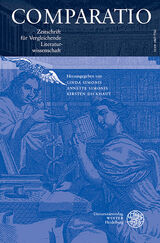Autor: Linda Simonis
- «
- 1
- »
Die Suche erzielte 8 Treffer.
Einleitende Überlegungen zum Themenschwerpunkt Editorial
La mondalisation océanique Beitrag
Guillaume Apollinaire et Blaise Cendrars
Buchbesprechung Rezensionen
Besprechungen Rezensionen
Radikale Mystik. Erkundungen des ‚espace du dedans‘ bei Maurice Blanchot, Georges Bataille und Henri Michaux Beitrag
Stasis und Leviathan. Die beiden Seiten des Bürgerkriegs in Antike und Gegenwart. Zu einem neuen Essay Giorgio Agambens Beitrag
Das apokryphe Imaginäre. Am Beispiel der gnostischen Paulus-Apokalypse Beitrag
- «
- 1
- »
